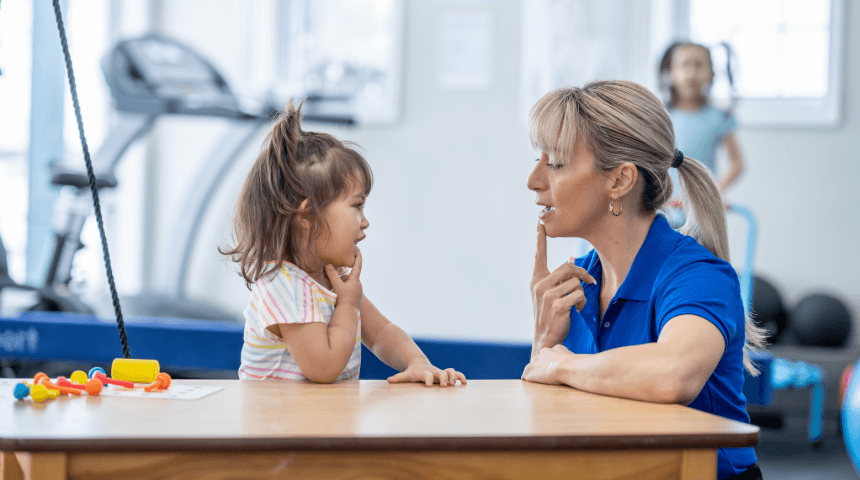Avoiding Preschooler Tantrums Without Buying More Toys
Keeping preschoolers active and occupied at home has become an even bigger challenge during the COVID-19 pandemic. When preschoolers (children aged two to five) are not actively engaged in constructive activities, it can result in tantrums, whining and often making a mess. A preschooler’s brain is hardwired for hours of taking in new information and making connections, not for sitting still.
Outbursts and frustration can compound the stress you and your family are under. What can you do, especially on days when it’s hot outside or pouring rain, or you’re just simply exhausted?
Early Childhood Screen Time
Screens are increasingly used to occupy preschoolers and young children. Because they are effective at keeping kids busy and quiet, the temptation to use them is especially strong when you need to be otherwise engaged. But studies show that the risks far outweigh the benefits, and may cause negative developmental effects that can last beyond early childhood.
The American Academy of Pediatrics recently reduced the recommended two hours of daily screen time to less than an hour, if it’s watched at all. This includes TV, tablets, phones, video games and other digital media, such as education games and programs.
That’s easier said than done. Recent studies show that, on average, American preschoolers are exposed to digital media for more than three hours a day. That may not seem like a big difference, but the American Psychological Association reports a correlation between weekly screen time hours and poorer performance on diagnostic tests for behavioral, cognitive and social development in two- to three-year-olds.
Signs of addiction and withdrawal are often seen in children as young as infants and toddlers. Most millennial parents have experienced tantrums and outbursts when trying to end or limit their children’s screen use and have experienced feelings of regret and or guilt when doing so.
Here are tools that can help you throughout the day with your preschooler, and also enjoy some constructive play together without needing to buy another new toy!
Before Going Toy Shopping, Look Around
Here are a few ways to use what you may already have around the house for exploratory play:
-
Water play. A small table with water-filled buckets or containers on it can keep preschoolers busy for hours. Add floating or sinking objects to engage their senses, but be aware of choking hazards and materials not safe for ingestion.
-
Alternating Toys. Your preschooler may have a lot of toys. Hiding some for a few weeks gives an opportunity to reintroduce them later, after your child has forgotten about them. It’s often like having a brand new toy!
-
Sand play. While a classic sandbox may not be at every household’s disposal, you can easily create opportunities for hours of sand exploration with a small table and containers filled with sand. Whether you choose to hide items for your child to dig up or provide small plastic cups or other utensils for pouring, sand play often allows for a great degree of discovery and experimentation.
-
Pretend play. No matter what toys your child has, you’ll often find that young children prefer to play with everyday items and imitate older siblings and adult caregivers. Some options include:
-
Recyclable boxes for makeshift musical instruments/shakers
-
Paper towel or toilet paper holders for makeshift toy car tunnels
-
Bamboo or wooden cooking utensils for pretend cooking play
-
Sheets for fort making
-
Construction paper for paper airplanes and boats
-
-
Free play. Allowing children limited periods of boredom provides opportunity for creativity. It provides chances to develop emotional self-regulation and practice delayed gratification, each of them critical skills for later in life.
-
Outdoor play. Preschoolers have a natural need to move. Even opportunities to run around a field can have significant positive effects on a preschooler’s mood, behavior and health, as well as the chance to bond with caregivers.
-
Music and dance. Children learn quickly from songs, and dancing provides an opportunity for physical activity. Dancing to music also has been found to have positive effects on mood and self-regulation for children of all ages.
-
Structured activities. Preschoolers tend to love activities that engage their senses in new ways, whether it’s arts and crafts (crayons or finger paints), modeling clay (store bought or homemade) or bubbles. While these activities often require more supervision, they can go a long way toward keeping kids engaged.
-
Household chores. Preschoolers are not too young to learn to help with simple tasks around the house. Whether sorting toys or laundry, making the bed or washing the car, involve your child as you do household tasks. With a little patience, they can learn to help with these tasks independently.
-
Storytime. Before you buy new books for your kids, pick one you’ve read many times instead. Change parts of the plot or make up a story to go with the pictures. Encourage your child to participate or even take the lead.
Managing Expectations
Expecting preschoolers to sit still for long time spans can lead to a great deal of frustration for both you and your child. Young children also can be unpredictable, messy and have frequent outbursts. Expectations that are realistic to a child’s age can help guide you to what routines and activities might allow for smoother days and more enjoyable time with your family.
Further tips include:
-
Recognize the limited attention span of preschoolers and keep activities to about 20 minutes..
-
Look for opportunities to incorporate physical movement. Being active from a young age has been deemed critical to maintaining healthy weight and exercise habits in adulthood.
-
Provide guidance, but allow creativity and choices where possible.
-
Structuring activities around regular meal and sleep/nap times makes for a happier and healthier child and family.
Are you interested in learning more?
Sign up for our e-newsletter for more tips and best practices from pediatricians.
Sign Up Here










